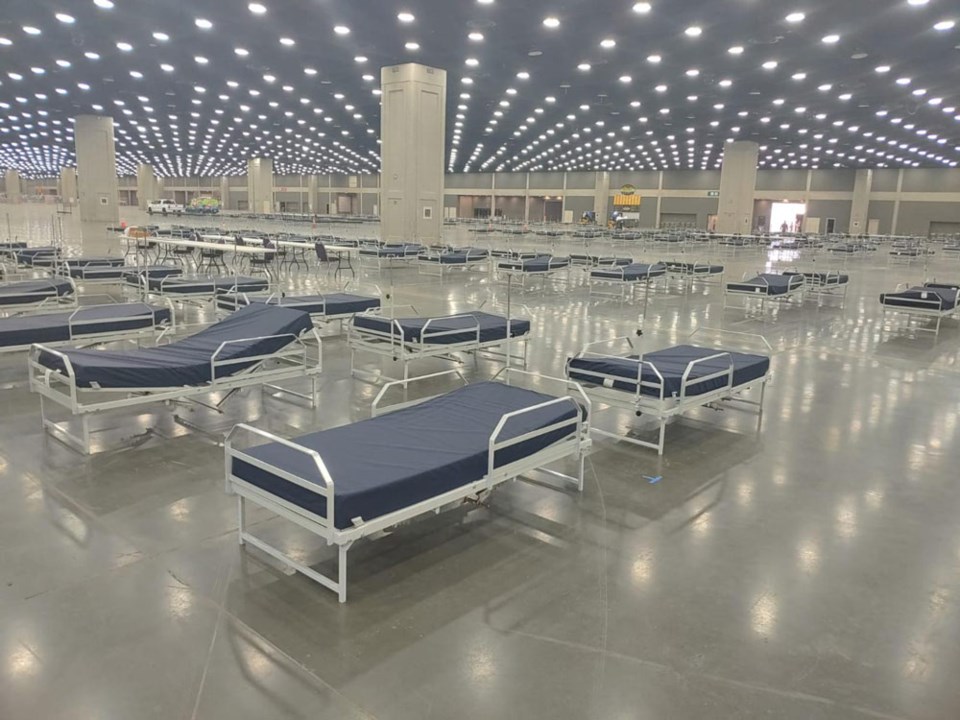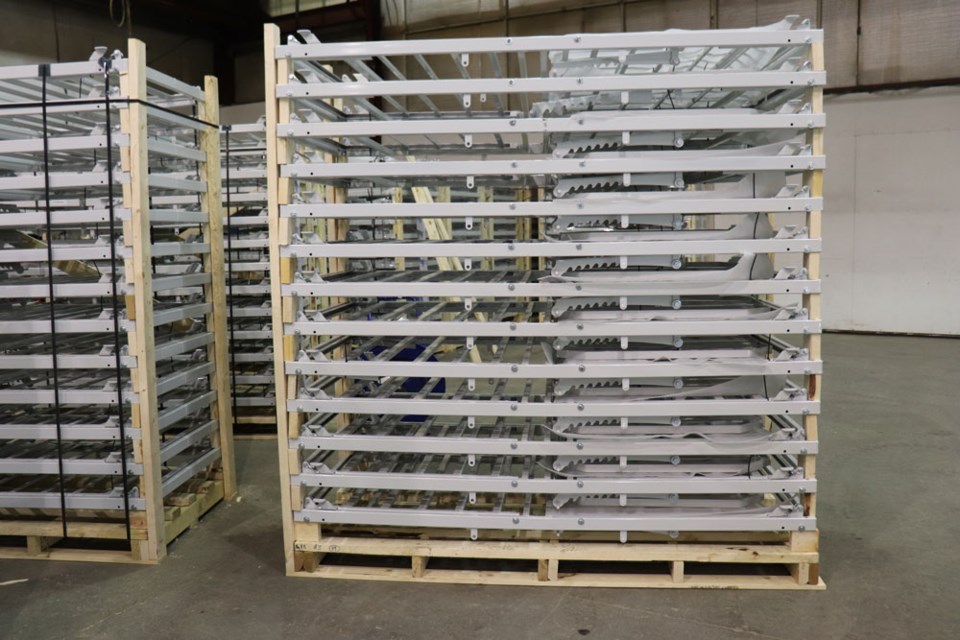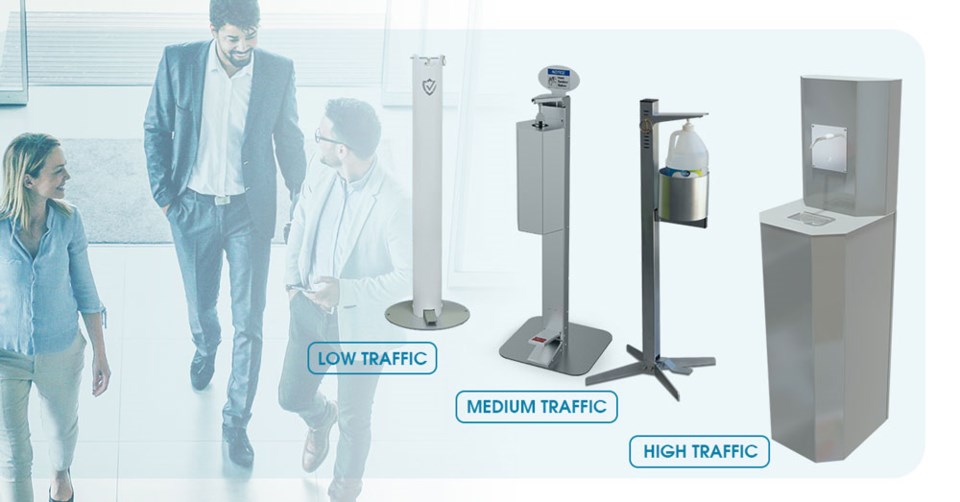A company that is based out of southeast Saskatchewan was able to find ways to meet pressing needs during the COVID-19 pandemic.
Saskarc Industries Inc., an industrial steel and metal fabrication company headquartered in Oxbow, was involved in two separate initiatives. The first was a project named Fastbeds, in which hospital beds were built to meet the expected increase in demand. The more recent effort was to construct hand sanitizer stations.
Roy Drever, the general manager of Saskarc, said they saw a “massive need” across North America for hospital beds. There were a lot of stories in the news about the shortage and there were very high estimates for how many beds would be needed.
Saskarc was facing tough times in their efforts to keep their staff employed.
“We partnered up with two other companies, two large fabrication companies in the U.S., so the trio of us came together, and then there was another large global company that was also part of our group, where we were able to retool our fabrication facilities quickly and manufacture hospital beds,” Drever told the Mercury.

��
They had to develop a design, engineer it and test it in a rapid fashion, because the need was urgent.
“Between our three fabrication groups, we put together a large engineering team, and we basically worked 24 hours a day, developing prototypes, and then they’d get a group going to the shops and building them and testing them, putting them through a rigorous process to make sure they were meeting all of the requirements, and then do any design modifications,” Drever recalled.
They were able to quickly empty out a shop, wash it out, reconfigure it from a custom fabrication to a manufacturing site with four production lines, and get the beds to market.
“Virtually overnight, we went from our normal custom steel/structural steel, into producing hospital beds,” said Drever.
In the month of April, they produced about 5,000 beds, and through their network of sub-vendors in Saskatchewan and Manitoba, they produced another 5,000 beds.
About 30,000 beds were created through the various partners and network, and those beds were shipped to locations throughout Canada, the U.S. and other countries.
Drever believes it was “pretty powerful” for the team to support people during the pandemic, with just a one-week turnaround from when the concept was first conceived to the beds being shipped.
Their strong engineering team, procurement team and knowledgeable production workers allowed them to make the transition and help people.
“We have a continuous improvement manager who is very well versed in production manufacturing, so he was very heavily involved with our production group as well to make sure that we’re setting our manufacturing lines up in the most efficient and productive manner,” said Drever.
Eventually, the availability of beds caught up with the demand, and so production was reduced. Fastbeds is still going, but they have scaled back. Beds are being shipped out almost every week.

More recently, they have started producing hand sanitization stations, in which they developed the stations for low, medium and high-traffic areas. These have been produced by the thousands, and Drever believes they have sent tens of thousands of gallons of sanitizer.
Everywhere people go, they are now asked to use hand sanitizer, from their office to grocery stores and other retail outlets.
“We had that same engineering team come together and designed three different hand sanitizer stations – low traffic and medium traffic and a high traffic one. And then one of our crews was partnered with an FDA (Food and Drug Administration) approved food processing facility, and they retooled their facility to … developing and producing hand sanitizer.”
They were able to take these packages to companies throughout North America.
Manufacturing and production were done through the same facilities and sub-contractor.

��
Many of their subcontractors had to lay off all their people at the height of the pandemic because they had no work, or their employees were on reduced hours. Those shops became busy again, allowing these companies to return to more normal business hours.
The hand sanitizer project is ongoing. Saskarc has a team across North America that is working on it on a daily basis, and they are shipping to every province in Canada and every state in the U.S.
Those who have received a bed through Fastbeds or a hand sanitizer station were very happy. Saskarc has received videos of beds being delivered into large locations or being set up by the U.S. Armed Forces.
“We’d get videos back from some of their senior officers, just thanking us. We were sending people to the field to help support them and give them training on how to set them up, and making sure that it went smoothly,” said Drever.
Their normal customer base has been very understanding as well, and they have been willing to work with them on adjusting delivery dates of their normal projects to allow Saskarc to tackle these projects and assist those affected by the pandemic.
Saskarc has employed as many as 135 people, but it currently hovers around 75. In April, when they were at peak levels for the bed project, they hired additional people due to the activity levels.
The pandemic has forced Saskarc to adapt in other ways. They need to have alternating shift start times, coffee breaks and lunch breaks to maintain social distancing, and they had to set up wash stations and sanitization stations, and had to restrict people coming in. As for team meetings, they are now happening online through digital platforms.
��
��




